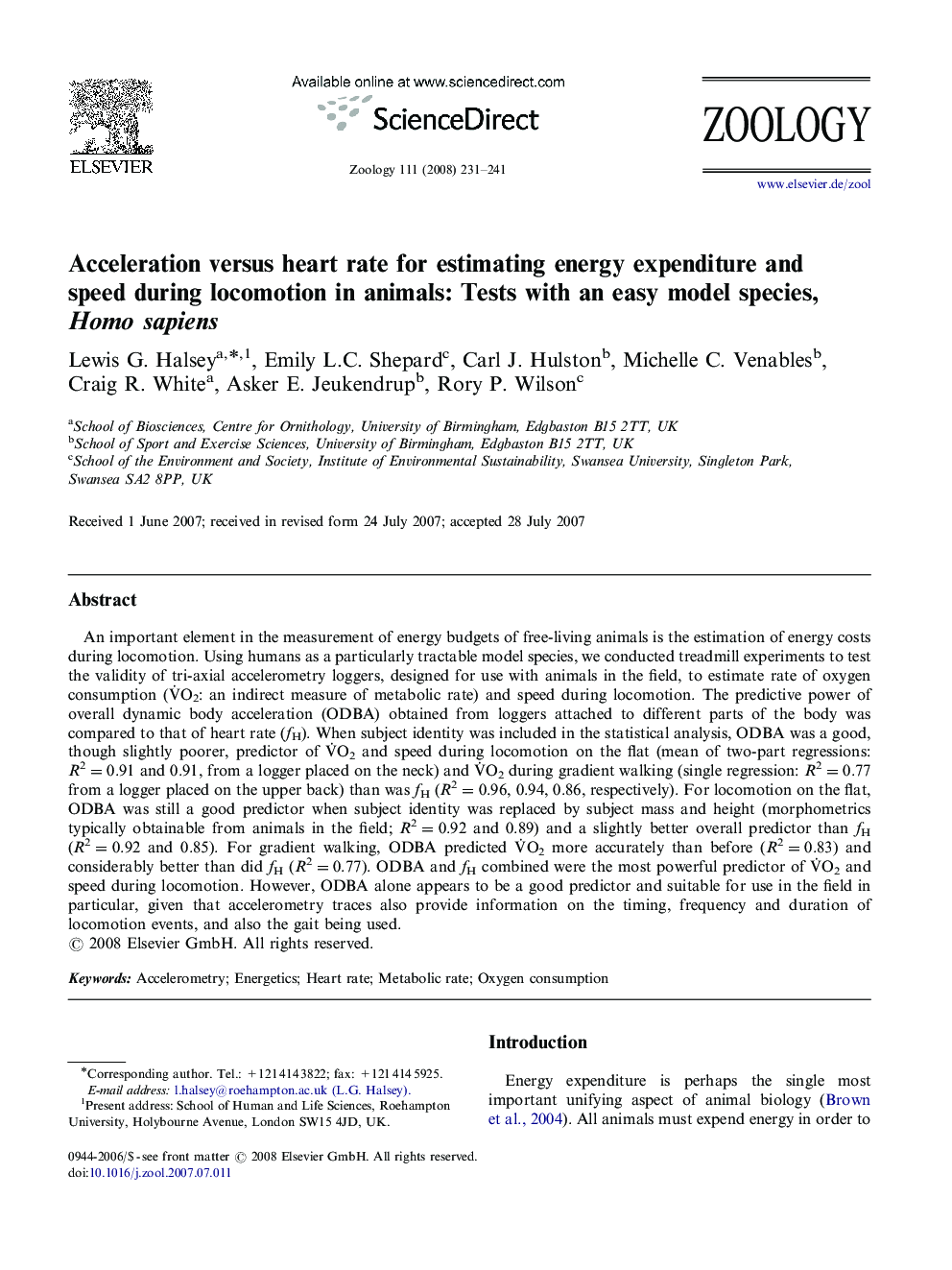| Article ID | Journal | Published Year | Pages | File Type |
|---|---|---|---|---|
| 2791360 | Zoology | 2008 | 11 Pages |
An important element in the measurement of energy budgets of free-living animals is the estimation of energy costs during locomotion. Using humans as a particularly tractable model species, we conducted treadmill experiments to test the validity of tri-axial accelerometry loggers, designed for use with animals in the field, to estimate rate of oxygen consumption (V˙O2: an indirect measure of metabolic rate) and speed during locomotion. The predictive power of overall dynamic body acceleration (ODBA) obtained from loggers attached to different parts of the body was compared to that of heart rate (fH). When subject identity was included in the statistical analysis, ODBA was a good, though slightly poorer, predictor of V˙O2 and speed during locomotion on the flat (mean of two-part regressions: R2=0.91 and 0.91, from a logger placed on the neck) and V˙O2 during gradient walking (single regression: R2=0.77 from a logger placed on the upper back) than was fH (R2=0.96, 0.94, 0.86, respectively). For locomotion on the flat, ODBA was still a good predictor when subject identity was replaced by subject mass and height (morphometrics typically obtainable from animals in the field; R2=0.92 and 0.89) and a slightly better overall predictor than fH (R2=0.92 and 0.85). For gradient walking, ODBA predicted V˙O2 more accurately than before (R2=0.83) and considerably better than did fH (R2=0.77). ODBA and fH combined were the most powerful predictor of V˙O2 and speed during locomotion. However, ODBA alone appears to be a good predictor and suitable for use in the field in particular, given that accelerometry traces also provide information on the timing, frequency and duration of locomotion events, and also the gait being used.
